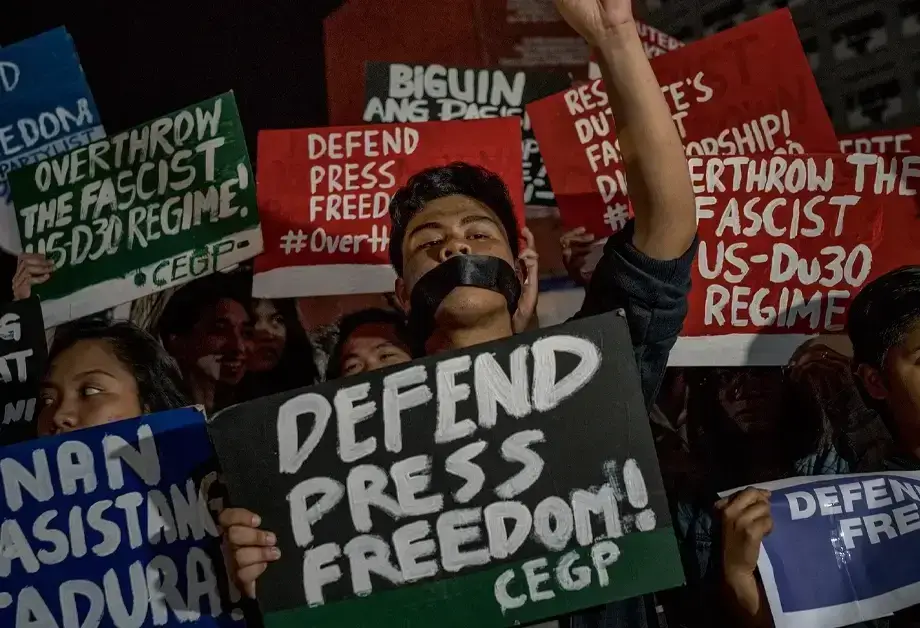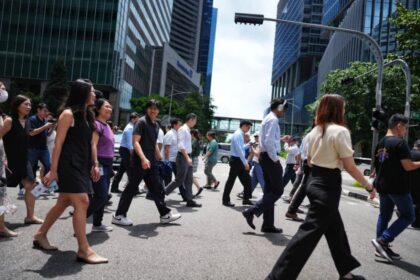Press Freedom in South Asia: A Region Under Siege
Press freedom, a cornerstone of democracy and public accountability, is facing an unprecedented crisis across South Asia. The Asia Press Freedom Report 2024–2025, supported by the International Federation of Journalists (IFJ) and other global organizations, paints a stark picture: journalists are increasingly targeted, media rights are routinely violated, and the very fabric of independent journalism is under threat. This article examines the key findings of the report, explores the underlying causes, and analyzes the broader implications for democracy and society in the region.
- Press Freedom in South Asia: A Region Under Siege
- Escalating Attacks and Violations: The Human Cost
- Legal and Political Pressures: Shrinking Space for Free Expression
- Economic Pressures and Job Insecurity
- Access to Information: A Growing Challenge
- Digital Media: Opportunities and Risks
- Gender Disparity and Discrimination
- Country-by-Country: Press Freedom Rankings and Trends
- Reform Efforts: Signs of Hope Amid Crisis
- Broader Implications: Democracy at Risk
- In Summary
Escalating Attacks and Violations: The Human Cost
Between 2024 and 2025, South Asia witnessed at least 250 documented violations of media rights. The toll on journalists has been severe: 69 were jailed or detained, and 20 lost their lives in the line of duty—a dramatic increase from previous years. In Bangladesh, nearly 300 journalists and media workers were injured, many shot during protests, according to the Bangladesh Federal Union of Journalists (BFUJ). Afghanistan reported at least 172 violations against journalists and media outlets, underscoring the fragile state of press freedom in the country.
These numbers only hint at the broader climate of fear and intimidation. Journalists across the region face threats, harassment, and violence, often at the hands of law enforcement or political actors. The IFJ notes that at least 19 journalists remain behind bars at the time of publication, with many more facing legal harassment or arbitrary detention.
Legal and Political Pressures: Shrinking Space for Free Expression
Governments in South Asia are increasingly using legal and political tools to suppress independent journalism. In India, the introduction of the Digital Personal Data Protection (DPDP) Act, 2023, ostensibly designed to protect privacy, has raised concerns about access to public information. Amendments to the Right to Information Act now allow authorities to block content deemed “personal information,” potentially undermining efforts to hold the government accountable.
Pakistan has seen a surge in violence against journalists, with 2024 marking the most dangerous year in two decades. The Institute for Research, Advocacy, and Development (IRADA) revealed that over 250,000 digital media workers in Pakistan lack legal safeguards for fair wages or safe working conditions. The use of defamation laws, sedition charges, and anti-terrorism legislation to silence critical voices is widespread, leading to self-censorship and a chilling effect on investigative reporting.
Sri Lanka’s controversial Online Safety Act, with its vague language, has raised alarms for its potential to stifle free expression. In the Maldives, journalists face bureaucratic hurdles as the Attorney General’s Office challenges compliance with information requests. Bangladesh’s transition from the Information and Communication Technology (ICT) Act of 2006 to the Cyber Security Act 2023 has brought little improvement in transparency or protection for journalists.
Economic Pressures and Job Insecurity
The financial sustainability of independent media is another major concern. Shrinking advertising revenues, government interference, and the rise of digital platforms have led to widespread job losses and forced closures of media outlets. Many journalists work without pay or under precarious conditions, especially as media houses become increasingly reliant on government advertising—a tool often used to influence editorial content.
The IFJ highlights the extreme precarity of gig workers and freelance journalists, who face not only economic uncertainty but also the challenges posed by artificial intelligence (AI) and the digital transition. New labor codes in countries like India encourage contract work, further eroding job security and professional standards.
Access to Information: A Growing Challenge
Access to reliable information is a fundamental right and a prerequisite for democratic participation. Yet, across South Asia, this right is under threat. Government officials are often unresponsive or ill-equipped to provide adequate information, and legal frameworks are increasingly used to restrict access rather than promote transparency.
In Bhutan, despite the government’s issuance of guidelines to promote transparency, journalists report that official spokespersons are frequently unresponsive. However, Bhutan stands out for its unique practice: the Prime Minister and Cabinet ministers hold monthly briefings with the media, a rare approach even globally. Still, Bhutan’s press freedom ranking has plummeted from 33rd in 2021 to 152nd in 2025, marking one of the steepest declines worldwide.
Digital Media: Opportunities and Risks
The digital transition has created new opportunities for alternative media, with blogs, podcasts, and YouTube channels proliferating across the region. These platforms offer a counterbalance to stagnating legacy media and provide space for diverse voices. However, the lack of editorial oversight and professional standards remains a concern, as does the spread of misinformation and hate speech.
The rise of encrypted messaging apps like Telegram and Signal has become vital for journalists seeking to communicate and publish stories without fear of surveillance or censorship. Yet, the proliferation of AI tools and the manipulation of information by political actors pose new risks to the integrity of journalism and public trust in the media.
Gender Disparity and Discrimination
The Asia Press Freedom Report also spotlights the persistent gender gap in media leadership. Few women occupy decision-making roles, and discrimination against women reporters is widespread. This lack of diversity not only undermines the quality of journalism but also limits the perspectives represented in public discourse.
Country-by-Country: Press Freedom Rankings and Trends
The report provides a sobering overview of press freedom rankings in South Asia for 2025:
- Nepal: 90th
- Maldives: 104th
- Sri Lanka: 139th
- Bangladesh: 149th
- India: 151st
- Bhutan: 152nd (down from 33rd in 2021)
- Pakistan: 158th
- Afghanistan: 175th
These rankings reflect not only the direct threats faced by journalists but also the broader environment of impunity, legal restrictions, and economic pressures that undermine independent media.
Reform Efforts: Signs of Hope Amid Crisis
Despite the grim outlook, there are signs of hope. Reform efforts are underway in several countries:
- Bangladesh’s interim government has drafted a Media Reform Policy 2025 to enhance access to information and rebuild state institutions.
- India’s proposed Media Transparency Bill 2024 aims to address media monopolies and regulate the distribution of government advertisements.
- Bhutan is reviewing a proposal for a fair and transparent advertisement policy and exploring support mechanisms for independent and digital journalism.
- Nepal has consolidated its state broadcasters into the National Public Service Broadcasting Agency, a move welcomed as a step toward more accountable public media.
- Sri Lanka’s new administration has pledged to address past crimes against journalists and repeal laws that undermine free expression.
These initiatives, while promising, require sustained political will, stronger legal protections, and genuine transparency to reverse the downward spiral of press freedom in the region.
Broader Implications: Democracy at Risk
The decline of press freedom in South Asia has far-reaching implications. A free and independent media is essential for holding power to account, exposing corruption, and ensuring that public aspirations are heard. As the IFJ states:
“Democracy cannot survive without press freedom, and as independent journalism continues to be threatened across South Asia by authoritarian policies, government censorship, and the subversion of justice, journalists persevere in an environment fixed against them. South Asian media continues to operate in conditions where the truth is obscured, and fight for their fundamental right of freedom of expression. It has never been more paramount to ensure the sustainability of free press and secure comprehensive protections for journalists.”
The erosion of press freedom not only endangers journalists but also weakens democratic institutions, undermines public trust, and limits the ability of citizens to make informed decisions.
In Summary
- Press freedom in South Asia is in steep decline, with at least 250 violations and 20 journalist deaths recorded between 2024 and 2025.
- Legal, political, and economic pressures are shrinking the space for independent journalism, leading to self-censorship and job insecurity.
- Access to information is increasingly restricted by government policies and unresponsive officials.
- Digital media offers new opportunities but also brings risks related to misinformation and lack of oversight.
- Gender disparity and discrimination persist in media leadership across the region.
- Reform efforts in several countries offer hope, but require strong political will and legal protections to succeed.
- The decline of press freedom poses a serious threat to democracy, public accountability, and the right to information in South Asia.












